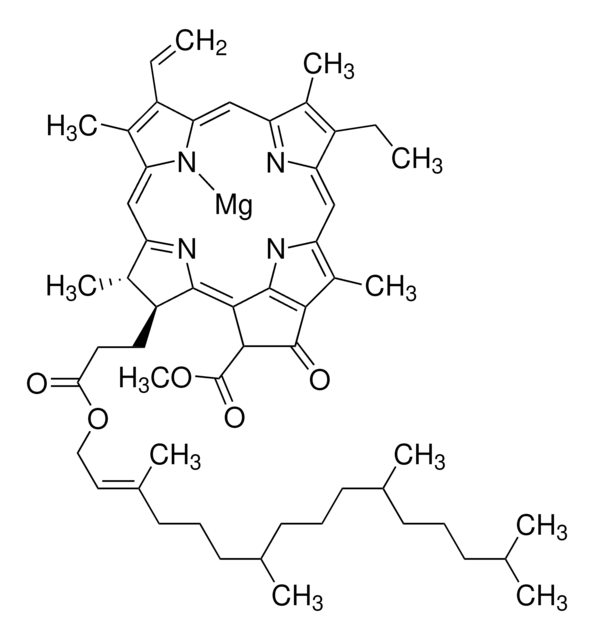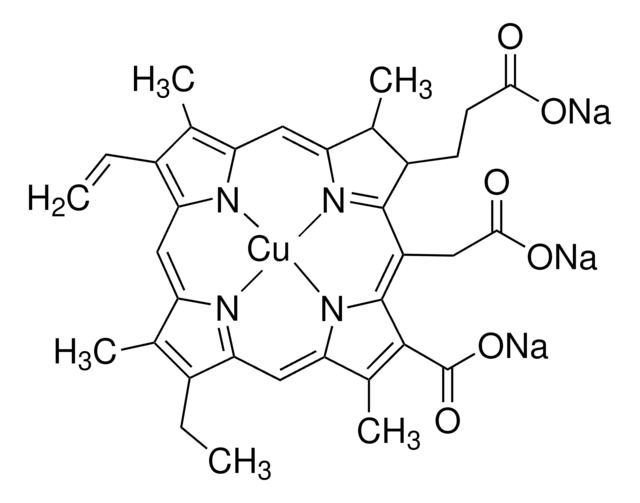About This Item
Recommended Products
grade
analytical standard
Quality Level
Assay
≥95.0% (HPLC)
shelf life
limited shelf life, expiry date on the label
technique(s)
HPLC: suitable
gas chromatography (GC): suitable
application(s)
cleaning products
cosmetics
food and beverages
personal care
format
neat
storage temp.
−20°C
InChI
1S/C55H71N4O6.Mg/c1-12-38-35(8)42-27-43-36(9)40(23-24-48(61)65-26-25-34(7)22-16-21-33(6)20-15-19-32(5)18-14-17-31(3)4)52(58-43)50-51(55(63)64-11)54(62)49-37(10)44(59-53(49)50)28-46-39(13-2)41(30-60)47(57-46)29-45(38)56-42;/h12,25,27-33,36,40,51H,1,13-24,26H2,2-11H3,(H-,56,57,58,59,60,62);/q-1;+2/p-1/b34-25+;/t32?,33?,36-,40-,51?;/m0./s1
InChI key
NSMUHPMZFPKNMZ-FCFLHPMBSA-M
General description
Application
- Fourier transform infrared (FTIR) spectroscopy-based quantification of chlorophylls (a & b) and pheophytins (a & b) from five brands of green tea samples
- Development of a high-performance liquid chromatography-diode array detection-mass spectrometric (HPLC-DAD-MS) method for the separation and determination of chlorophylls along with their derivatives in Taraxacum formosanum samples
- Analysis of 14 dietary supplement samples for the quantification of chlorophylls, its degradation products, carotenoids, and pheophytins by a UV-vis spectrophotometric method following their separation by high-performance thin-layer chromatography (HPTLC)
- Evaluation of the effect of pressure, temperature, CO2 flow rate, and a polar co-solvent on the supercritical fluid extraction (SFE) of carotenoids and chlorophylls from microalgae Scenedesmus obliquus for use in food processing
- Simultaneous measurement of chlorophylls (a & b) and carotenoids (β-carotene and lycopene) in fruit samples of strawberry, apricot, and raspberry by two UV-vis spectrophotometric methods
Storage Class Code
11 - Combustible Solids
WGK
WGK 3
Flash Point(F)
Not applicable
Flash Point(C)
Not applicable
Choose from one of the most recent versions:
Already Own This Product?
Find documentation for the products that you have recently purchased in the Document Library.
Customers Also Viewed
Our team of scientists has experience in all areas of research including Life Science, Material Science, Chemical Synthesis, Chromatography, Analytical and many others.
Contact Technical Service







